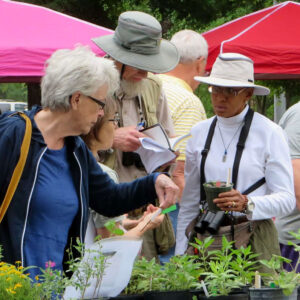By Janis Merritt, Guest Author
It is a nice coincidence that most xeriscape gardens are also great butterfly gardens. Add basking places, shelter, food and water to your garden to maximize enjoyment of butterflies during all seasons.
Basking Places and Shelter
 Some species of butterflies hibernate through the winter as adults. They use tree bark, fence posts and cracks in logs as hibernating places. Others winter in the egg, larval or pupal stage.
Some species of butterflies hibernate through the winter as adults. They use tree bark, fence posts and cracks in logs as hibernating places. Others winter in the egg, larval or pupal stage.- Leave or add some large and small trees for perching. Evergreen trees and shrubs provide protection from storms. Some examples of evergreens are silktassle, wax myrtle, yaupon holly, cenizo, evergreen sumac, mountain laurel, Arizona cypress, live oak and cedar.
- Create an edge of flowers to attract butterflies. Examples are low flowers at the edge of lawns or high flowers along a fence or near a stand of trees.
Water to Drink
- Fill a shallow dish with sand. Approximately one inch from the top, add pebbles for the butterflies to land on, then add water.
- Do not use a sprinkler to water butterfly plants as this can dilute or wash nectar away completely.
Nectar & Larval Food
 Plan your butterfly garden to provide blooming plants throughout the season.
Plan your butterfly garden to provide blooming plants throughout the season.- Use large splashes of color. Butterflies are most attracted to purple, white, yellow and pink. True blues and reds are also appealing.
- Native grasses are a larval food primarily for Skipper butterflies. These grasses also provide cover during cold nights and from rain-storms. They also provide seeds for birds.
- Some butterflies prefer rotten fruit. Provide native plants that drop fruit such as grapes, dewberries, Mexican plum, Texas persimmon and Blanco crabapples. The fruits are also a food source for birds.
- To increase your butterfly population, be sure to provide plants for the caterpillars to munch. You can mix these plants in with your nectar plants, grow them in containers or provide a special place to plant them. Remember: without caterpillars, there will be no butterflies.
Janis Merritt is a native plant specialist and senior crew leader for San Antonio Natural Areas.


